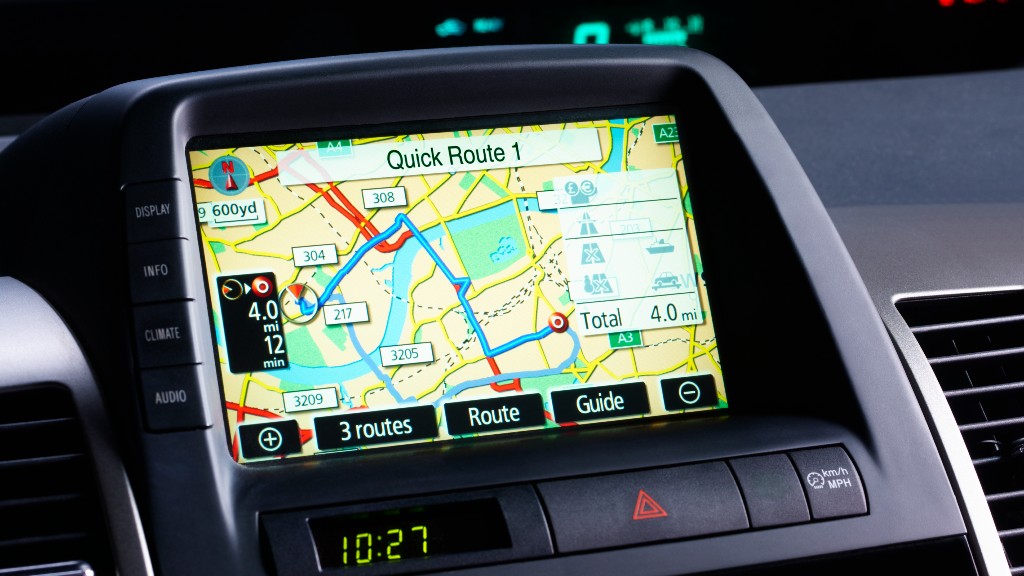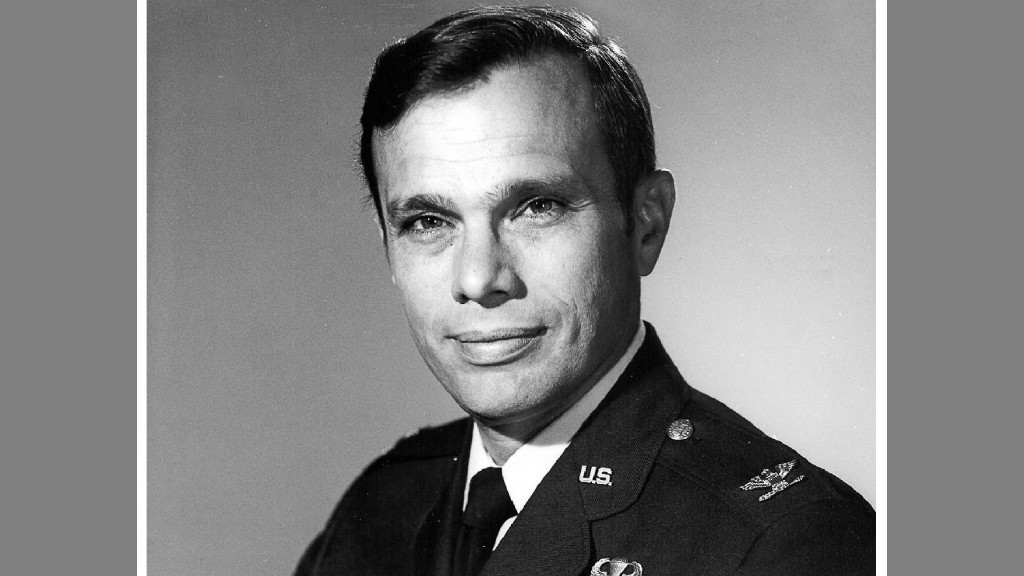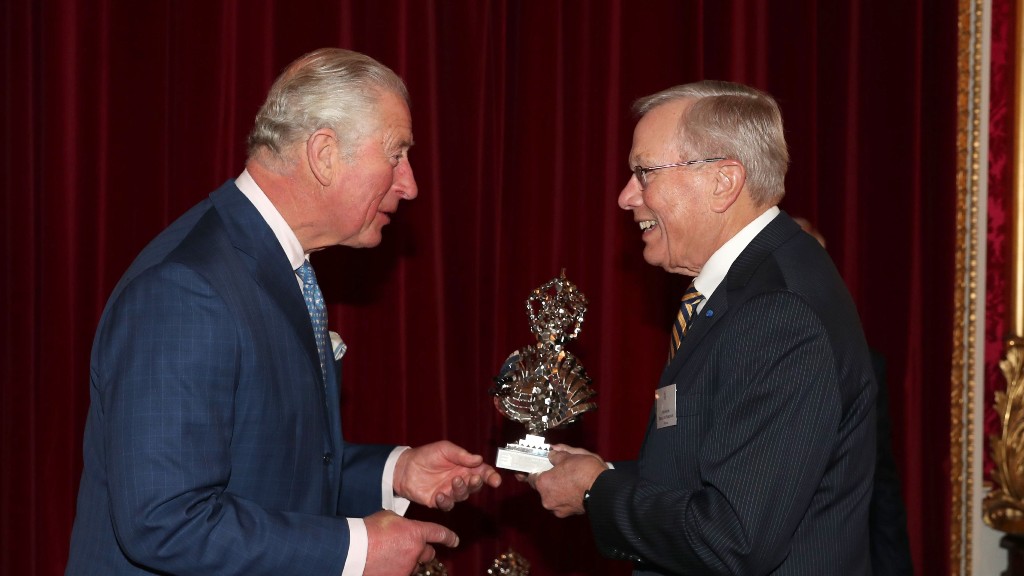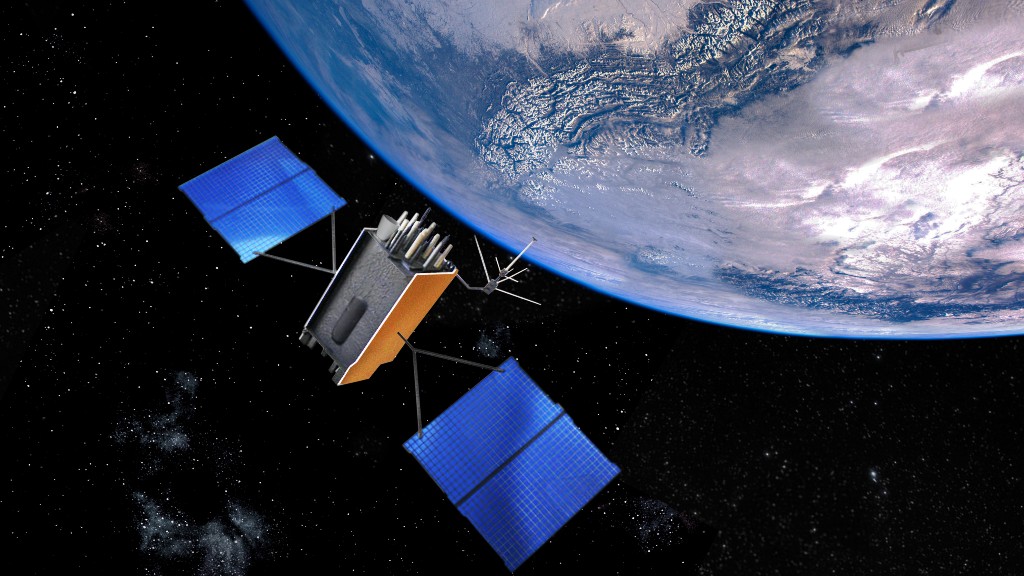GPS: Everything you need to know about the space-based technology keeping us on track
GPS is a space-based technology for everyday use.

GPS stands for Global Positioning System and we'd be lost without it (quite literally).
Originally called Navstar GPS, this space-based technology is owned by the U.S. government and operated by the U.S. Space Force and relies on a swarm of 31 satellites to provide users with approximately 23 ft (7 meters) accuracy, 95% of the time, anywhere on Earth's surface, according to the Federal Aviation Administration (FAA).
This vital satellite constellation orbits about 12,500 miles (20,117 kilometers) above Earth's surface, orbiting our planet every 12 hours and emitting continuous navigation signals. Receivers on the ground snag these signals out of the air, using them to calculate time, location and velocity with high accuracy.
Related: Anti-satellite weapons: History, types and purpose
GPS began its life as a strictly military technology but it has now flooded into the everyday lives of billions of people around the world and it's no longer the only constellation providing location services.
Russia has the Glonass system, which originates from the Soviet Union era when they began to devise the system in the 1970s. The European Union has the Galileo system and China has Beidou
Collectively, these navigation satellite constellations are called Global Navigation Satellite Systems (GNSS).
GPS origins
The origins of GPS technology date back to World War II, when the U.S. and British navies deployed navigation systems that used ground-based radio signals. But the idea really got off the ground when the Soviet Union launched Sputnik — the world's first artificial satellite — in 1957.
Just days after Sputnik's launch, American scientists noticed that they could pinpoint the satellite's location based on the Doppler shift of its radio signals — a measure of how the wavelengths seemed to stretch out or contract depending on the satellite's movements.
This got the researchers thinking about creating a space-based navigation system. In the late 1950s, they began developing and testing satellite navigation technology, and the U.S. Navy deployed the operational Transit satellite system in the 1960s.
Then, in 1973, a group of Pentagon officials decided to create a "defense navigation satellite system," laying the groundwork for a system called Navstar-GPS — what we now know simply as GPS. We interview one of the pioneers of GPS, U.S. Air Force Colonel Bradford Parkinson at the end of this article. v
How does GPS work?
GPS relies on very accurate atomic clocks carried on the satellites. Each satellite emits signals that enable receivers to determine their location and time, according to the FAA.
The receiver on Earth computes the time difference between the time of signal reception and the time it was sent by the satellite to compute the distance between the receiver and the satellite. The receiver needs signals from at least four satellites to be able to compute an accurate position.
GPS uses

These days, many people take Global Positioning System devices for granted. Most people are familiar with the concept of using a GPS system (either as a stand-alone device or in a phone) to find one's way around. GPS can also identify a user's location, which is useful for orientation and even for fun activities such as geocaching (finding hidden caches with the use of GPS devices.) But there are other uses as well, besides location and navigation.
GPS can also be used for tracking, such as adding a tag to an animal to see the extent of its territory. The technology also assists with mapping, such as helping to better define the outline of a country. There are likely thousands of applications for GPS systems, ranging from everything to helping hikers navigate in remote areas, to assisting farmers with precisely seeding their fields, to assisting drones with finding their targets.
"The idea of going somewhere without satellite positioning and maps at your fingertips — or snapping photos without geotagging data — can be as alien to people these days as hitching up a wagon for a run to the feed store. It's an anachronism from another era," Digital Trends wrote.
Evolution of GPS
The U.S. Air Force sent the first GPS satellite into orbit in 1978, and many other launches followed over the years.
By the early 1990s, the system was functioning, and its capabilities were demonstrated during the first Gulf War. Allied troops relied heavily on GPS to navigate the featureless Arabian desert, Air Force officials have said. By 1995, the 24th GPS satellite was in position, marking the system's arrival at full operational capacity at that time.
GPS satellites send out two signals — one for military use and one for civilian applications. In the early years, the civilian signal was intentionally degraded for national security purposes. But that changed in 2000 when President Bill Clinton ordered the degradation turned off, making civilian GPS much more accurate. The decision has helped GPS become a more reliable tool for private citizens all over the world.
The capabilities of GPS are constantly improving, as the Air Force launches newer, more accurate GPS satellites on a regular basis. The U.S. federal government is committed to providing a minimum of 24 operational GPS satellites in orbit, 95 percent of the time. There are currently more than 30 satellites up, providing some margin for error.
Interview with Air Force Colonel, Bradford Parkinson
Air Force Colonel, Bradford Parkinson, was the lead architect for the Global Positioning System (GPS) program. In 1973, he convinced the US Air Force of the value of a new satellite-based navigation system. By building satellites and experimenting to improve them, he and his team provided the world with accurate positioning, navigation and timing services.
The first GPS satellite was launched into space just 44 months after the team's program was approved. Parkinson went on to become a Professor at Stanford University in 1984, the same university that he graduated from with a PhD in guidance control navigation. There he continued to explore the multitude of applications his team's satellite service could achieve, including robotic tractors. From the maps on our phones to real-time aircraft positioning for pilots, Parkinson's lead role in this groundbreaking technology has resulted in some declaring him the 'father of GPS'.

Air Force Colonel, Bradford Parkinson, was the lead architect for the Global Positioning System (GPS) program and has been declared by some as the "father of GPS".
Space.com: How did you get into engineering?
Parkinson: I don't ever think I ever thought of myself as anything other than an engineer. It was not a serious question to me. When I was young, I made electronic amplifiers from scratch. This was back in the era of vacuum tubes, and they were all discrete components.
I went to the United States Naval Academy in Annapolis and education there was principally engineering, so I felt right at home. I graduated and went out in the Air Force as an engineering officer. There, I was trained in aircraft avionics.
Space.com: Whose idea was it to create GPS?
Parkinson: There had been a previous satellite navigation system called Transit. It was, by our standards, quite crude but it was worldwide. GPS can provide 24/7, 365-days-a-year coverage to the whole Earth and Transit couldn't do that. It would give you a relatively crude fix once every two or three hours. It was good enough for some Navy ships, but it wasn't good enough to land airplanes. Then, a study was done and 12 techniques were highlighted as ways to navigate using space satellites. We selected the hardest, which provided four dimensions; latitude, longitude, altitude, and very precise time.
Two important breakthroughs had to occur. First, we had to come up with a signal that was very unique. Back then we were experimenting with a new signal that was so quiet that if you looked at the radio spectrum you wouldn't see it at all. Now everyone accepts it as a GPS signal, but there was great skepticism that it could be good enough to navigate. Today we navigate to a millimeter with it.
Secondly, we wanted the satellites to go around the Earth, be autonomous and have clocks with stability better than one second in 300,000 years. We were trying to measure time to a fraction of a billionth of a second.
Space.com: How did the Air Force respond to your proposal?
Parkinson: The Air Force did not want this system, they fought it tooth and nail. I got in a lot of trouble in the Pentagon. I remember the two-star general taking his finger and sticking it in my chest and saying, "Parkinson, if you keep advocating this your career is going to go down in flames."
Space.com: Why didn't they want it?
Parkinson: They wanted airplanes, not satellites. It cost a lot of money, and they couldn't envision what precision would do for them. Even after we ran the tests and met every single one, the Air Force still tried to cancel the whole thing. Of course, now the Air Force fully embraces it. The reason the signal is so reliable — and it is very reliable at 99.98% on any given satellite and for the whole system even better — is because it is operated by young Air Force sergeants and lieutenants. Everyone says that's not a good idea, but these are great people, really good people. I'm proud of them.

Space.com: How did the Air Force come to accept the system?
Parkinson: They were forced to accept it. It turned out Dr Mal Currie, who was in charge of all the development for the whole Department of Defence, had come to our offices. He was a bright guy with a PhD in physics. I spent three hours with him — it was just me, a very young Colonel and group captain, and the Defense Department's development leader. And at the end of that time, he emerged and became a champion of us. I call him "The Godfather" because he was looking after us. The Air Force would try to cancel it and The Godfather would say, "No. No, you don't get to cancel that one. That's my favorite program."
Space.com: Who was on your team?
Parkinson: Within my office, there were 50 or 60 Air Force officer engineers that I had hand-picked. In almost all cases, they were officer engineers who worked with real hardware. They typically had Master's degrees from MIT, Stanford, Michigan — the big engineering schools. Six of us had PhDs. This was an extremely competent group of people. So, when asked if a lot of people worked for me, I like to say they were working with me. They were working for me, but these were the kind of people you admire, and I trusted them. It was sort of like combat.
Space.com: What other challenges did you face during the project?
Parkinson: Early on, I realized I was getting really stressed leading this, but I had a solution. At noon, I wouldn't eat lunch. I would go and run. I'd been in the office from seven to noon, and by that time the problems had gotten pretty thick. Running was sort of a zen thing. I would contemplate the problems and by the time I came back to the office, I knew what to do. It was important.
Usually, I'd run alone, but because my schedule was full, my guys knew that if they couldn't get in to see me, they could run with me and talk about anything they wanted. On Fridays, we'd all start running as a big band of 10 or 12 of us, and I was a pretty fast runner back then. We were doing these big two-mile loops and I would hold it at eight-minute miles. The guys that had something to talk about would run the first two miles and those who could would run the next two miles until there was just one Lieutenant. Boy, was he fast. As soon as everyone else leaves, we'd pick up the pace and finish off the 10 miles. I got into marathoning, and I would say at least a dozen of my officers became marathoners. They did have a saying "Run for your career".

Space.com: Before GPS was launched, what did you think the most beneficial application would be?
Parkinson: I knew that the Air Force in World War II had to do, in essence, carpet bombing. What was called "precision weapon delivery"' was if they dropped a bomb within a quarter mile of the target. And I was saying "let's do that within 30 feet". Precision was the number one purpose in my mind, so that when the military decides it has to take out a target, that it was that target, and not a mosque, or a school, or a hospital. I called it a weapon system for humanity. That sounds strange, but to me, that's what it was.
I also recognized that there were civilian applications. From the get-go, I declared that there was going to be a civil signal available. We weren't going to guarantee its accuracy, but it was going to be available. Within 24 hours of turning that satellite on, the students under Peter Daly at the University of Leeds, England, became the first civil set to use the very first satellite we launched.
Space.com: Are there any current GPS applications you didn't expect?
Parkinson: There's all kinds of them. I knew we could position to a meter or two, and I knew there was a technique to get down to millimeters, but it involves a signal processing technique that I didn't think was robust. Engineers proved me wrong. If you can do that, you can use it for automatic landing of airplanes.
Another thing is that in your cell phone there is a little chip that costs about $2. It has roughly 10,000 times the capability of the receivers that we built for a quarter million dollars. This costs you $2 and has 10,000 times the capability. It's cheap and affordable. If you have accuracy, and it's cheap and affordable, all of a sudden the whole world opens up. It's a tribute to engineers who keep building on the previous generation and making things bigger, better and cheaper. I didn't expect these applications. I envisioned some things, but at the time I envisioned them, it demanded both that the accuracy would be improved and that the cost had to go down. I thought that it could happen, but it hadn't in 1980.
Space.com: Is it true that you predicted GPS use for car navigation?
Parkinson: Yes. Of all the applications, the one I should have patented was that one. Long before car GPS was invented, I had done a drawing of the car, the dashboard, the voice, the next turn, the ability to push a button to the nearest hospital. I had all that on a chart. I'm proud of the vision, but I take no credit for the execution.
In about 1983, I was rolling along giving talks around the world to engineers. Detroit had sent two or three groups of engineers and I talked about the car application idea. Those engineers were sitting there looking disinterested, thinking "there's no way anyone wants that in the car". But there were also some Japanese engineers in the room, and they were furiously scribbling notes. It ended up being that the first car GPS invented was in Japan. Why were they so intent? I think the underlying reason is kind of funny: house numbering.
In this country, we number the houses consecutively odd one side, even the other. Apparently, Japan didn't do that. They'd number the house according to when it was built. So if you're trying to navigate to a house, you'd have no idea where on this street it is. With GPS, you could sort all that out. You dialed in the house number and knew number one was here and two was down the block. So I think that was the reason.
Space.com: What do you think about GPS's ability to track mobile phone users?
Parkinson: Obviously, there are a lot of benefits. You can track your child, we can track people who we have let out from jail with anklets if it's part of the judge's decision. We can track the taxi drivers' cab coming to pick us up. All those are good things, but we in the western world value our privacy. And so how do you balance that?
In our country, the Supreme Court has set law enforcement. You cannot track the citizen unless you get a judge's warning, and I think that's the right thing to do. So there is a balance. It's not perfect, but I think in this case, the benefits have not been seriously degraded with that I think getting a warrant is the right thing to do.
Space.com: How does it feel to be recognized and receive awards for a system that continues to grow in usage?
Parkinson: It's a great honor. But, I hope that's the end of recognizing me. I have gotten a lot of awards and recognition, the Queen Elizabeth prize is one I particularly like, because three other people were included: James Spilker, Hugo Fruehauf and Richard Schwartz. It was a team effort. I was the leader, but who really made it happen were lots of other people, who humbled me. They were something else, and when I look at this award, it's for all of us. It really is.
Space.com: How do you think GPS will continue to evolve?
Parkinson: We are entering revolutionary times for Global Navigation Satellite Systems. In the past, we've been concerned because the whole world depends on this one signal, all of which are broadcast on the same frequency. But now the U.S., Europeans and others are adding signals at different frequencies which gives a greater robustness.
Other really good news is that chip makers are making chips right now for your phone that listen to all those satellites and to frequencies other than the main one. The result is that all of a sudden your phone can potentially get accuracies down on the order of an inch, or a few centimeters. Heaven only knows what will that do in terms of the ability to control drones or the ability to precisely navigate in lots of ways that people haven't even thought of. So, I see a second revolution coming for GPS that's very exciting.
Additional resources
Explore GPS further with this informative article from NASA. Learn more about the future of positioning, navigation and timing with the latest technology news from the European Space Agency.
Join our Space Forums to keep talking space on the latest missions, night sky and more! And if you have a news tip, correction or comment, let us know at: community@space.com.
Breaking space news, the latest updates on rocket launches, skywatching events and more!

Michael Wall is a Senior Space Writer with Space.com and joined the team in 2010. He primarily covers exoplanets, spaceflight and military space, but has been known to dabble in the space art beat. His book about the search for alien life, "Out There," was published on Nov. 13, 2018. Before becoming a science writer, Michael worked as a herpetologist and wildlife biologist. He has a Ph.D. in evolutionary biology from the University of Sydney, Australia, a bachelor's degree from the University of Arizona, and a graduate certificate in science writing from the University of California, Santa Cruz. To find out what his latest project is, you can follow Michael on Twitter.
- Elizabeth HowellFormer Staff Writer, Spaceflight (July 2022-November 2024)
- Daisy DobrijevicReference Editor
-
mchargmg Col. Parkinson is a great example of why the military need technically competent officers. Thank you Colonel!Reply -
weirmg Indeed, in 1979 I was a brand new 2nd Lt and Electrical Engineering graduate and found myself in the GPS Joint Program Office at Los Angeles Air Force Station and understudied a protégé of Col Parkinson's in the systems engineering directorate. I suspect the accuracy concerns the Colonel mentioned (see article) were resolved by use of a sophisticated software filter which neutralizes, for example, real-world atmospheric, electromagnetic, gravity/magnetic fluctuations and relativistic effects. Effectively, a kind of Rosetta Stone for GPS triangulation mechanics. It was truly an honor to have worked with some of these brilliant scientists and engineers.Reply -
Atilla De Bum I built the first 4 'resonant Cavity tuning devices for the GPS as a part of a government project . It was originally called the Fleet Satellite Communications (Fle-Sat-Com) and was designed to be a targeting system for submarine launched nuclear missiles. The submarine would pop up its GPS antenna on top of the periscope, collect it's location data and feed the 'home' instructions to the missiles. Then wait for the Launch command.Reply -
billslugg My college roommate runs a small boat out of Carrabelle, FL. He told me when they switched from LORAN to GPS, the boaters would run out to the entrance pole at Dog Island and set their GPS. After a couple of them hit the pole at night, word got around just how accurate GPS was and they should lay off about 50 feet to one side and put in new numbers.Reply -
Atilla De Bum As soon as the military realized the bandwidth was much greater than they needed, they began leasing side channels to surveyors. Their accuracy was +/- one Centimeter. Then they began leasing channels to boaters that were accurate to +/- 20 feet. If the boaters had a problem and had to call for a rescue, they could relay their Latitude and Longitude from the GPS so the search/rescue vessels didn't have to search hundreds of square miles. Now the +/- accuracy is included on every Smart Phone. Sometimes it will tell you to turn in the middle of the block, or sometimes take you to the wrong address...Reply
